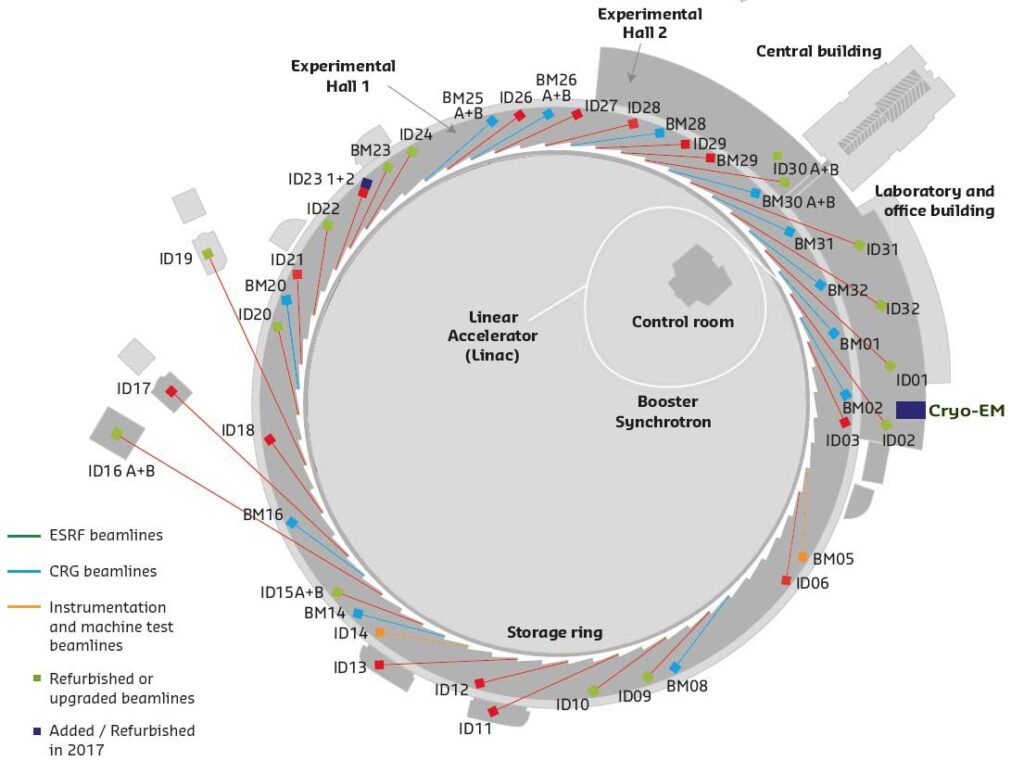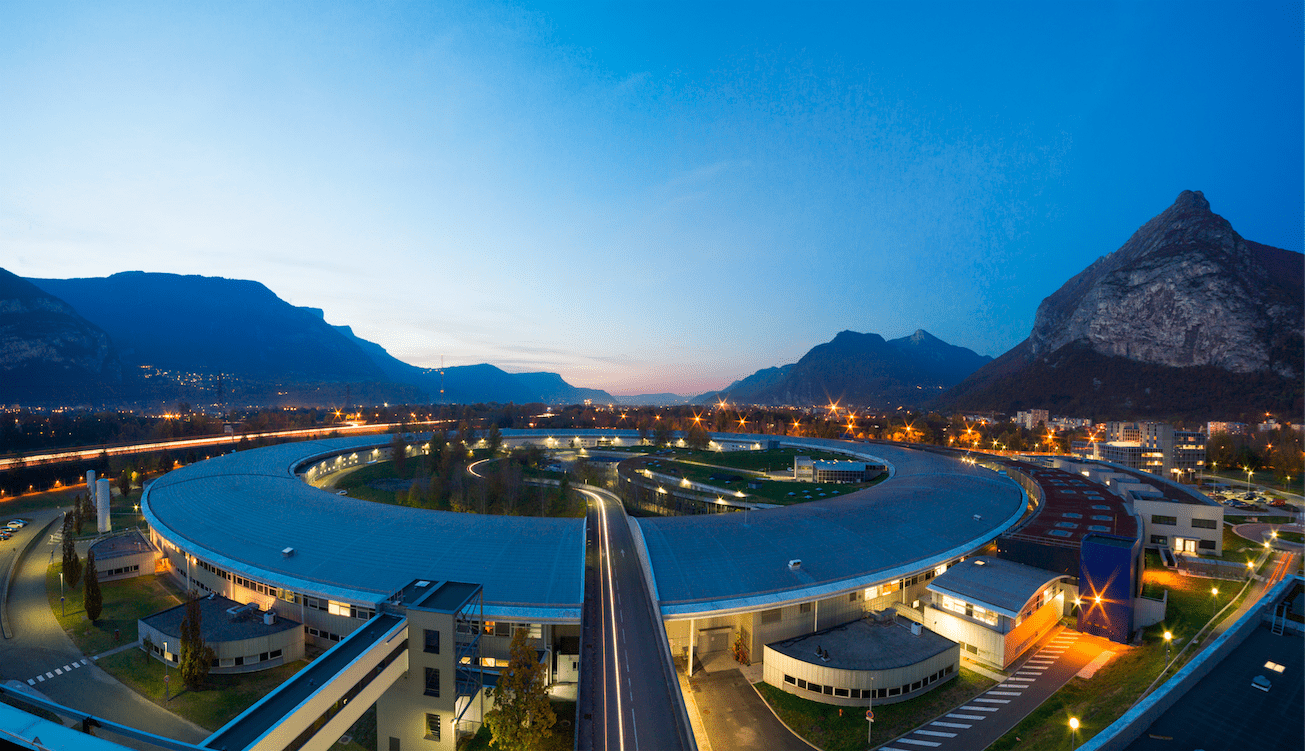Grenoble (France), 2018, 10-12 December
The ESRF is a French non-profit Société civile, subject to French law.
The ESRF is funded by an intergovernmental Convention and is an excellent example of international cooperation with 21 partner nations, of which 13 are Members and 8 are Scientific Associates. Each Member State designates official delegates to the ESRF Council, the highest governing body of the ESRF. The ESRF Council functions as the shareholders’ assembly and decides on important issues of company policy.
As an international leader, the ESRF participates in many local, national, and international partnerships. The facility shares a physical site, called the European Photon and Neutron Science Campus, with the neutron source Institut Laue-Langevin (ILL) and the European Molecular Biology Laboratory (EMBL). Together, they have created a hub of excellence that has stimulated co-location of specialist laboratories such as the Institute for Structural Biology, the Partnership for Structural Biology, the Partnership for Soft Condensed Matter and industrial research collaborations. In Grenoble, the ESRF is also member of the GIANT campus and partner of the COMUE (University) Grenoble Alpes.

Internationally, as a member of EIROforum, the ESRF works with research institutions across Europe to support the development of the European Research Area and to promote science education. The ESRF-EBS project has been highlighted as an ESFRI landmark in the 2016 ESFRI roadmap.
The ESRF is the world’s brightest synchrotron light source. Every year, 9000 scientists from 21 partner countries and from around the world travel to Grenoble to use its extremely brilliant X-rays for leading-edge research. This fundamental and applied research contributes to addressing the complex global challenges that our society faces, such as health, energy and the environment. It also contributes to the development of new technologies for industry and to preserving humanity’s cultural heritage, lighting the way to a sustainable and peaceful future.
Fields of research:
- Electronic structure, magnetism and dynamics
- Complex systems and biomedical sciences
- Structural biology
- Structure of materials
- Matter at extremes
- X-ray nanoprobe
- Instrumentation Services and Development Division
- Accelerator and Source Division
The Structure of Materials Group provides facilities for a range of X-ray scattering, imaging and spectroscopy experiments, relevant to the fields of energy research, catalysis, engineering, metallurgy, nanoscience and other elements of advanced technology, along with aspects of fundamental structural physics and chemistry. In addition of traditional technological subjects, the Structure of Materials Group covers also X-ray imaging studies for archaeology and palaeontology. The introduction to the group’s chapter in the annual ESRF Highlights gives an overview of some recent accomplishments.
Training and mentoring the next generation of scientists is at the core of the ESRF’s mission. As a world-class facility and a leader in synchrotron science, the European Synchrotron offers an exciting international environment for PhD studies.
Every year, the ESRF welcomes new PhD students from among the top science graduates in their countries. We currently host over 30 PhD students who come from our 21 partner countries and beyond. These students pursue ambitious research projects in diverse fields, including physics, chemistry, materials science, life sciences, earth and environmental sciences, engineering, cultural heritage and palaeontology.
https://www.esrf.fr/UsersAndScience/Experiments/StructMaterials

Leave a Reply